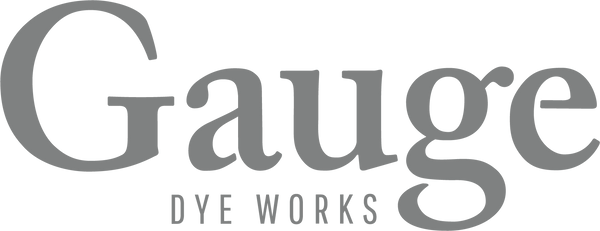FAQs

What makes your yarn different from other self-striping yarns?
Our yarns are precision-dyed with your project in mind. Every skein is designed to create a specific visual effect—like two perfectly matching socks, or stripes that stay even across a triangular shawl. It’s all the joy of colourwork, with none of the ends to weave in.
What’s the difference between your striping styles?
Each striping style is dyed for a specific project type:
-
Round Trip – Two matching halves, perfect for socks, mittens, sleeves. Sometimes the whole skein is mirrored, sometimes there are multiple repeats of a striping pattern.
-
One-Way Trip – A long, non-repeating striping or pattern. Great for hats, scarves, or cowls.
-
Shawl Yarn – Even stripe widths for top-down triangle shawls. The magic is in the math—the stripes stay the same width as the rows get longer.
-
Sweater Yarn – Stripes just in the yoke, with a solid body. Designed for baby sweaters and other circular yoke garments.
What’s the difference between 100 g and 150 g skeins?
100 g skeins are the standard size for most of our projects. 150 g skeins give you more yardage—great for larger accessories, bigger sock sizes, or patterns that use more yarn. In general, both sizes will have the same number of stripes. The difference is that the stripes are 1.5x longer in the 150 g skein.
Are your yarns suitable for beginners?
Absolutely. Our yarns are designed to take the guesswork out of colourwork. Just pick the right yarn for your project type, cast on, and enjoy the ride.
Are your yarns machine washable?
Yes! All of our bases are superwash wool. We recommend hand-washing to keep your project looking its best, but machine washing on gentle works too.
Is your yarn made in Canada?
Yes! We are a Canadian company. We dye our yarn in our studio in Victoria, BC, and our yarn is spun at a Canadian mill. Our Merino wool is sourced from from farms in New Zealand and mulesing is not performed on the sheep.
Ordering & Shipping
How do I buy your yarn?
We sell our yarns in limited batches directly through this website. Popular items can sell out quickly, so join our email list to get first dibs.
How long will it take for my order to ship?
We ship most orders within 2–3 weeks. You'll receive a tracking number as soon as it’s on its way.
Can I combine in-stock and dyed-to-order items in one order?
Yes, you can but your order will ship once everything is ready. That may mean a slightly longer wait if you order something dyed-to-order.
Do you offer wholesale?
We don’t offer wholesale at this time. We’re a small, family-run studio focused on direct-to-customer experiences.
Projects, Kits & Knit-Alongs
What’s included in a sock kit?
Our "kits" are typically one skein that can be separated into multiple cakes when you wind it. For example, a sock kit might have two matching self-striping halves (one for each sock) and a small ball of a contrast colour for heels and toes.
Do you run knit-alongs?
Yes! We host knit-alongs every second month. Each one has a different theme and a dedicated yarn. It’s a fun way to connect, share progress, and feel part of something creative.
Techniques & Tips
How do I get matching socks?
Check the colour map on the product page.
- Sometimes, you’ll start one sock from each end of the skein.
-
Other times, you’ll find a repeating pattern and divide the skein in half based on the color sequence.
The color map is your best guide.
How do I divide my skein in half?
Again, look at the colour map:
- Some colourways are easy to divide visually using the stripe repeat.
-
For others, you may need a scale to weigh the skein and find the halfway point.
How do I use every inch of the skein?
It depends on the project! For example:
-
For a Musselburgh Hat, weigh your yarn after finishing the increase section. You’ll need that same amount left for the decreases.
-
If your yarn has even-width stripes, you can count how many stripes it took to increase—and knit that same number before starting decreases.
Again, the colour map is your best friend here.
